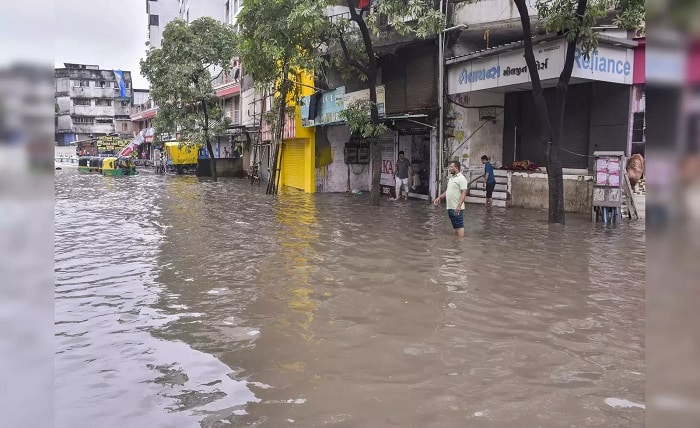Weather Surat: A Complete Guide to Climate, Seasons, and Travel Tips

Weather Surat: An Introduction to Surat’s Climate
Surat, a bustling city in Gujarat, India, is known for its diamond industry, textile markets, and rich culture. But for both tourists and residents alike, understanding the weather Surat experiences throughout the year is crucial for planning daily life or an unforgettable trip. Positioned near the Arabian Sea, the city enjoys a tropical savanna climate, characterized by distinct wet and dry seasons. The weather Surat offers brings a unique blend of hot summers, monsoon rains, and mild winters.
Thanks to its coastal location, weather Surat remains moderately humid year-round. The city’s atmospheric conditions play a vital role in shaping its industries and lifestyle. Whether you’re planning to explore Surat’s historical landmarks or attend a business meeting, knowing the weather Surat has in store can be a game-changer.
Weather Surat in Summer: Hot and Humid Months
Summer in Surat stretches from March to June and is known for high temperatures and humidity levels. The weather Surat presents during this season can be intense, with daytime temperatures often soaring above 40°C (104°F). Heatwaves are not uncommon, and the city often sees dry conditions until the onset of monsoon.
Despite the heat, early mornings and late evenings offer a relatively cooler escape, making it the best time to step out. Locals and visitors alike take precautions like staying hydrated, avoiding direct sun exposure, and wearing light cotton clothing to adapt to the weather Surat delivers during summer.
Moreover, air conditioning becomes essential in homes, offices, and public transport systems to cope with the harsh weather Surat brings this time of year. While tourism dips slightly, business remains steady, especially in the diamond and textile sectors.
Weather Surat During Monsoon: Rainy Yet Refreshing
Monsoon arrives in Surat by mid-June and lasts until September, bringing a refreshing change. The weather Surat sees during this time is defined by consistent rainfall, with July and August being the wettest months. The average rainfall during the monsoon season exceeds 1,000 mm, making it one of the most hydrating seasons for the region.
The lush greenery, cooler temperatures, and misty atmosphere give Surat a charming makeover. But travelers should plan wisely, as the weather Surat experiences in monsoon can cause waterlogging in some low-lying areas and occasional transportation delays.
Despite the rain, the monsoon season is a great time for nature lovers to enjoy the scenic beauty of Surat. Local parks, gardens, and even the Tapi River come alive under the drizzling skies. If you’re comfortable getting a little wet, the weather Surat brings during monsoon can be both soothing and picturesque.
Weather Surat in Winter: Mild and Pleasant Climate
Winter in Surat runs from November to February and is arguably the best season for tourism and outdoor activities. The weather Surat exhibits during winter is mild, with temperatures ranging from 15°C to 30°C (59°F to 86°F). The humidity drops, and the air becomes crisper, making it ideal for sightseeing and festivities.
Unlike northern parts of India, Surat doesn’t experience harsh cold. The weather Surat during this period is just cool enough to make hot beverages and warm clothes enjoyable but never extreme. Mornings are often foggy, adding a magical touch to the cityscape, while afternoons are sunny and comfortable.
Whether you’re exploring Dumas Beach or enjoying the vibrant street food scene, the weather Surat provides in winter ensures a memorable and relaxed experience for everyone.
Monthly Breakdown of Weather Surat: What to Expect Each Month
To plan better, let’s look at how the weather Surat varies month-by-month:
- January: Cool mornings with warm afternoons. Avg temp: 20°C. Ideal for sightseeing.
- February: Pleasant temperatures, beginning of warmer days. Avg temp: 23°C.
- March: Start of summer heat. Weather Surat turns dry and warm.
- April: Hot and dry. Temperatures touch 38°C.
- May: Peak summer. High humidity and heat dominate the weather Surat offers.
- June: Beginning of monsoon by mid-month. Light showers expected.
- July: Heavy rainfall. Weather Surat becomes wet and cooler.
- August: Continued rain, high humidity. Moderate travel disruptions.
- September: Rain tapers off. Weather Surat becomes more comfortable.
- October: Dry and pleasant. Post-monsoon freshness.
- November: Onset of winter. Best time to visit Surat.
- December: Cool and breezy. Festive mood all around.
Each month presents a different side of the weather Surat experiences, offering something unique to every visitor or resident.
Impact of Weather Surat on Daily Life and Activities
The weather Surat plays a significant role in shaping the city’s daily life. For example, during summers, schools often adjust timings to avoid the mid-day heat. In monsoon, business activities may slow down due to waterlogged streets and unpredictable showers. Winters, on the other hand, encourage outdoor gatherings, shopping sprees, and cultural festivals.
Health precautions also vary with the seasons. The hot weather Surat presents in summer increases the risk of dehydration and heatstroke, while monsoon brings concerns like waterborne diseases and dampness-related issues. Winter, being milder, is relatively risk-free, though occasional flu or cold due to temperature shifts is common.
Markets and public areas are more crowded during pleasant weather. During monsoon and summer, indoor venues like malls and cafes see higher footfall, driven by the influence of weather Surat on comfort and mobility.
Travel Tips Based on Weather Surat Patterns
If you’re planning a trip, it’s wise to align your itinerary with the weather Surat offers during your preferred travel window. Here are some season-specific tips:
- Summer Travel: Carry sunscreen, sunglasses, water bottles, and wear breathable clothes. Prefer early morning or evening outings.
- Monsoon Travel: Pack umbrellas, raincoats, waterproof footwear, and prepare for possible delays. Stay updated with weather forecasts.
- Winter Travel: Light woolens should suffice. This is the best time for outdoor dining, local sightseeing, and beach visits.
Regardless of the season, being aware of the weather Surat experiences will help you pack smart, stay healthy, and make the most of your visit.
Weather Surat Forecast Tools and Resources
To stay updated, there are multiple apps and websites that provide real-time weather Surat information:
- AccuWeather: Offers hourly and 15-day forecasts, including air quality updates.
- IMD (India Meteorological Department): Official source for alerts, rainfall reports, and satellite images.
- Weather.com: Known for detailed updates and travel planning tools.
- Google Weather: Quick updates and easy-to-use interface.
- Local News Channels: Provide region-specific alerts and advisories.
Staying informed about the weather Surat will help you make decisions on commuting, dressing, and activity planning. During monsoon or extreme summers, weather alerts can be crucial for safety and convenience.
Conclusion
From hot summers to romantic monsoons and pleasant winters, the weather Surat showcases the dynamic charm of this vibrant city. Whether you’re visiting for work, leisure, or family, understanding seasonal patterns helps you enjoy Surat to the fullest. Its weather not only affects day-to-day life but also contributes to its cultural and economic fabric.
By syncing your travel or local plans with the weather Surat provides, you can ensure comfort, productivity, and memorable experiences. So pack accordingly, check the forecasts, and enjoy all the shades of Surat’s ever-changing sky!
FAQs
1. What is the best time to visit Surat based on weather conditions?
The best time to visit Surat is from November to February when the weather Surat offers is cool, pleasant, and perfect for sightseeing.
2. How hot does Surat get in summer?
During summer, the weather Surat brings can see temperatures rise up to 42°C, especially in May, with high humidity levels.
3. Does Surat receive heavy rainfall?
Yes, the weather Surat experiences in monsoon includes heavy rain, especially in July and August, often exceeding 1,000 mm in total.
4. Is winter in Surat cold enough for woolens?
The weather Surat has in winter is mild. Light woolens are usually enough as temperatures rarely drop below 15°C.
5. How does the weather Surat impact travel plans?
The weather Surat can influence travel plans, especially during monsoon due to flooding or delays. Winter is the most travel-friendly season.




